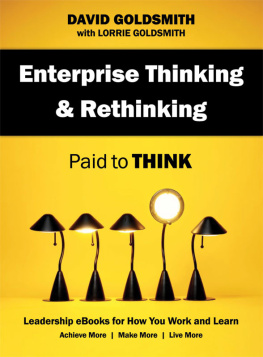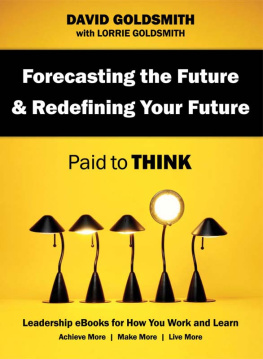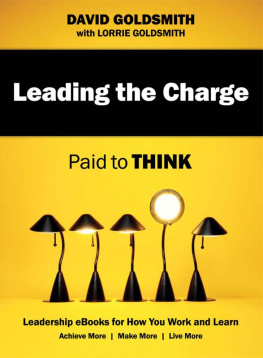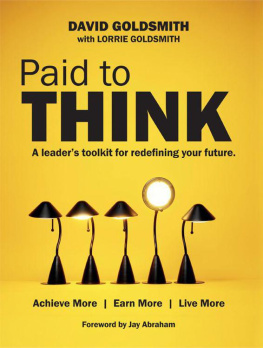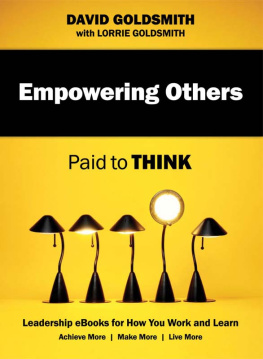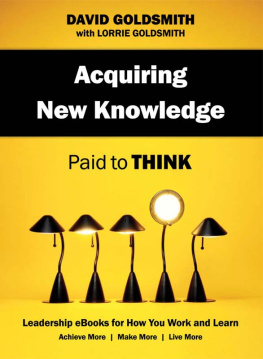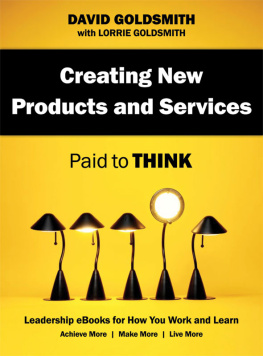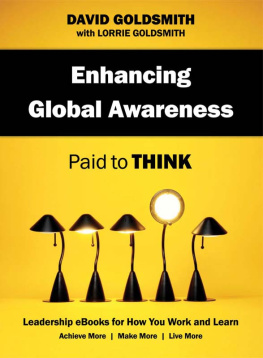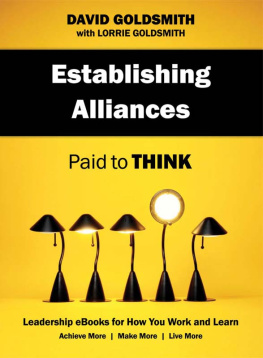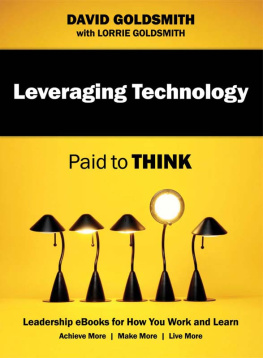
What you should know about your Paid to THINK Single
Here are a couple of tips you should know now about the Paid to THINK Single. The Paid to THINK Single is being offered to decision makers as an educational tool, designed from a long history of people seeking to use portions of content in their quests to do their jobs better. Over the years, countless leaders have received and utilized single chapters from Paid to THINK effectively to solve certain challenges and create opportunities, and now they are available to you, too.
Although each Paid to THINK Single stands on its own as a proven educational resource, be aware that within the content of certain Paid to THINK Single books, you may come across references to other Paid to THINK Singles or to the full edition of Paid to THINK. In these instances, you may want a full edition of Paid to THINK on hand to clarify terminology and concepts not fully described in this particular Paid to THINK Single.
Regardless, leaders and managers have used Paid to THINK Singles as cost-effective means of sharing information with other leaders and/or stakeholders. For instance, if you want to get six managers and 34 group members up to speed on a particular topic rapidly, you dont have to purchase 40 copies of Paid to THINK and ask everyone to read only one chapter within the larger book. Instead, you can economically teach your people by simply securing six copies of Paid to THINK for your leadership team and 34 copies of a Paid to THINK Single and achieve the same outcome!
Paid to THINK Singles offer additional value to people working in NGOs (non-governmental organizations), NPOs (non-profit organizations), and in emerging markets where the need for leadership information is great but where budgets may not be ample enough to cover pricey educational tools and methods. Luckily, Paid to THINK Single gives more people the opportunity to learn and develop..
Paid to THINK Singles make great gifts, and theyre convenient for those who dont want a full book. Whatever your purpose in choosing a Paid to THINK Single, youll find it to be an economical and easy way to learn.
This book is designed to provide accurate and authoritative information about business and leadership. Neither the author nor the publisher is engaged in rendering legal, accounting, or other professional services, by publishing this book. If any such assistance is required, the services of a qualified financial professional should be sought. The author and publisher will not be responsible for any liability, loss, or risk incurred as a result of the use and application of any information contained in this book.
This book contained single-subject material from the book Paid to THINK. Content within this Paid to THINK Single, therefore, does not necessarily cover all the terminology or descriptive material referenced within that pertains to the comprehensive resource Paid to THINK.
Copyright 2012 by David Goldsmith
All rights reserved. No part of this book may be used or reproduced in any manner whatsoever without written permission except in the case of brief quotations embodied in critical articles or reviews.

BenBella Books, Inc.
10300 N. Central Expressway, Suite 400
Dallas, TX 75231
www.benbellabooks.com
Printed in the United States of America
10 9 8 7 6 5 4 3 2 1
Library of Congress Cataloging-in-Publication Data is available for this title.
978-1-937856-44-1
Editing by Lorrie Goldsmith
Copyediting by Shannon Kelly
Proofreading by Cape Cod Compositors, Inc. and Rainbow Graphics
Indexing by Barbara Holloway, WordCo Indexing Services, Inc.
Cover design by Jelena Mirkovic
Text design and composition by Maria E. Mendez, Neuwirth & Associates, Inc.
Printed by Bang Printing
Distributed by Perseus Distribution
www.perseusdistribution.com
To place orders through Perseus Distribution:
Tel: 800-343-4499
Fax: 800-351-5073
E-mail:
CONTENTS
1
ENTERPRISE THINKING
EXECUTIVES AND SALES PERSONNEL AT an American company worked for years negotiating a deal to sell $2.4 million of laser equipment to a prospective buyer in Japan. After numerous correspondences, it appeared that the Americans had finally made some progress. They were to ship one of the lasers to Japan, where it would undergo a thorough inspection. If it could meet the Japanese buyers strict quality standards, standards that were higher than those of the U.S. domestic market, then the Americans could close their sale.
The equipment arrived on time as promised. It was immediately tested and inspected. Then the laser was dismantled so that each component could be examined meticulously. At every step of the process, the laser passed inspection with flying colors. The sale seemed inevitable until one of the buyers managers passed by the lasers packaging and caught a glimpse of something that didnt look quite right.
Peering into the shipping carton to get a closer look, he found a shoe print left behind by one of the packagers at the American facility. The buyer could surmise no reasonable explanation for the footprint besides sloppiness, because the inside of a box is never exposed from the time it is die-cut to when it is folded by machine into its boxy shape. He directed his team to repackage the laser into its box along with the following message: If you can manage to get a footprint in the box, I cant imagine what you might have done to the product. Another two years passed before the Americans were able to close that sale. Imagine the increased time, money, and resources that were expended within that span of time because the seller lost an opportunity through its back door.
Situations like this occur all the time within organizations throughout the world. The timeliness of a contractors bid submission, the politeness of a companys receptionist, the cleanliness of a restroom... every component of an organization contributes to its success or failure. And its up to leaders like you to make sure that youre continually focused on the right matters at the right timesystems, structure, processes, personnel, capital, and moreto keep all of those components working harmoniously and optimally. Compound this awesome responsibility with the impact that an increasingly rapid pace of technological change is having on our organizations and you can quickly see how important it is to make great decisions fast. The Enterprise Thinking approach, which Ill explain shortly, will improve upon your current decision-making processes.
Your Challenges Are Universal
For more than a decade, Ive worked with decision makers worldwide as a consultant, speaker, and New York University instructor. These experiences have afforded me the opportunity to talk in depth with a wide range of leaders. Prior to developing Enterprise Thinking, I had conducted more than 1,800 one-on-one interviews with top leaders, midlevel decision makers, and frontline managers across countless industries in diverse specialties like nanotechnology, aerospace, water and sewage, construction, and so on. To be clear, my role as an interviewer has never been that of a researcher, per se, but as someone who is hired to help organizations grow and prosper. Therefore, my aim is always to get to know my clients, their needs and challenges, and their strengths and weaknesses,
Next page
